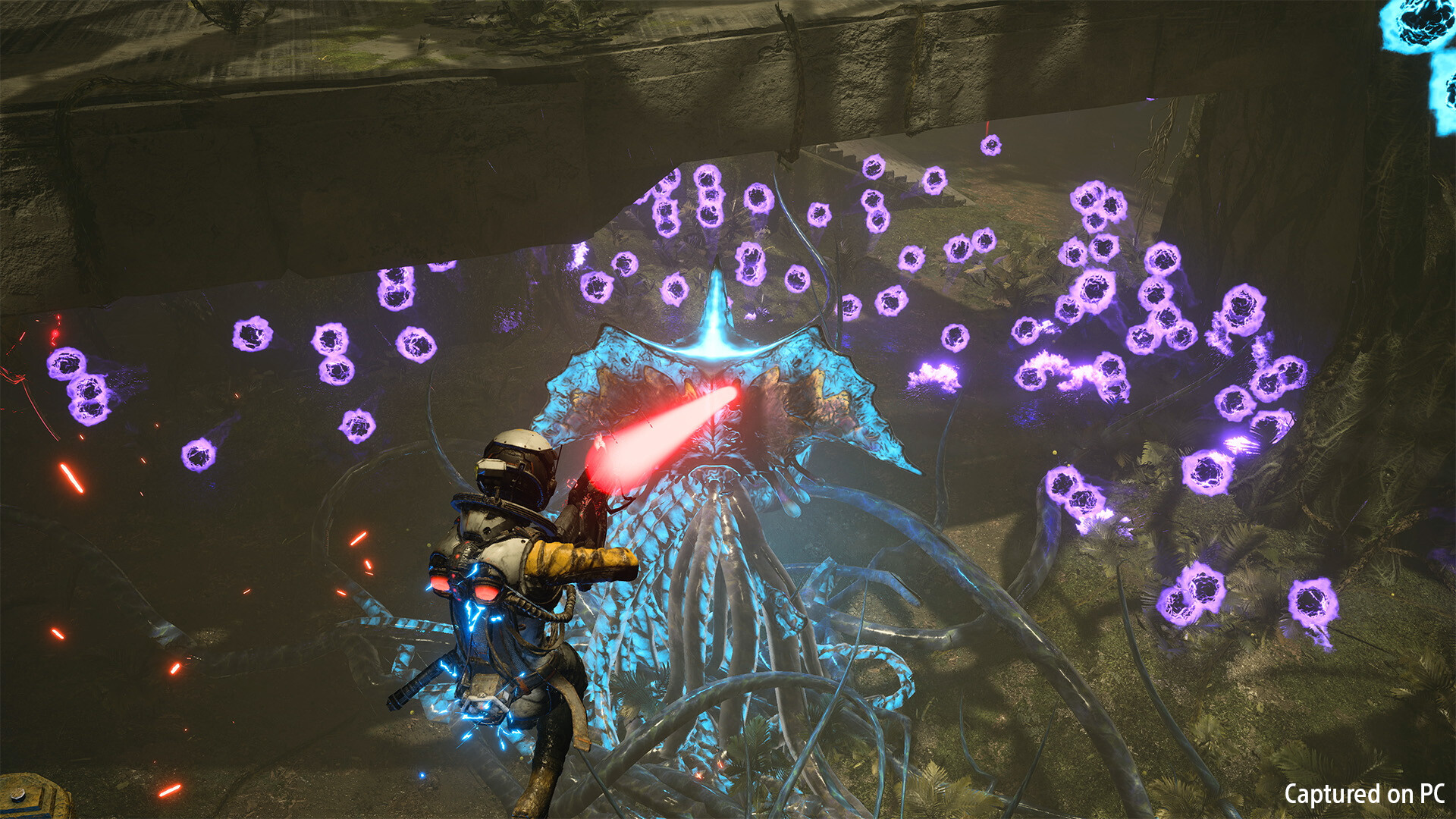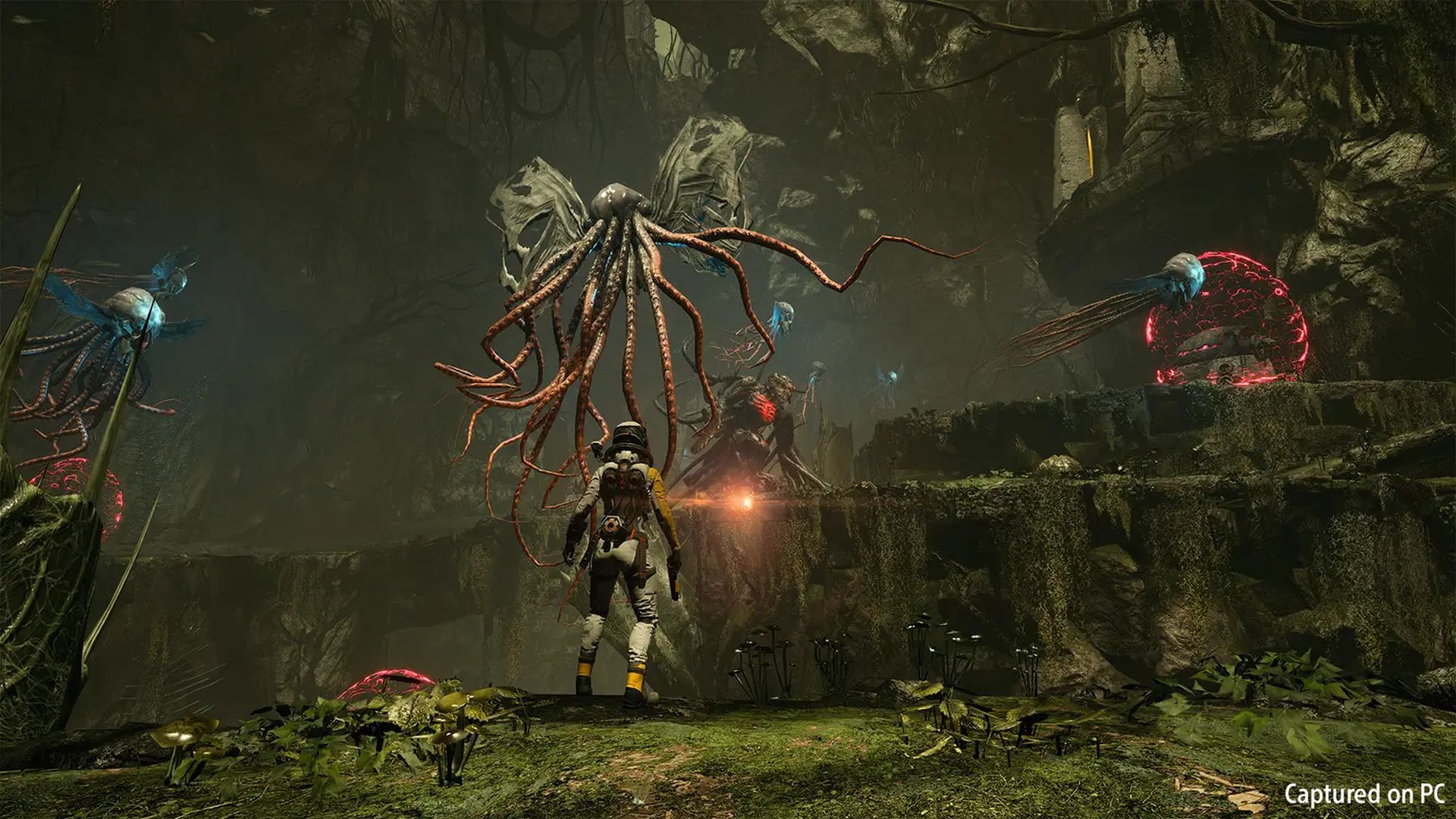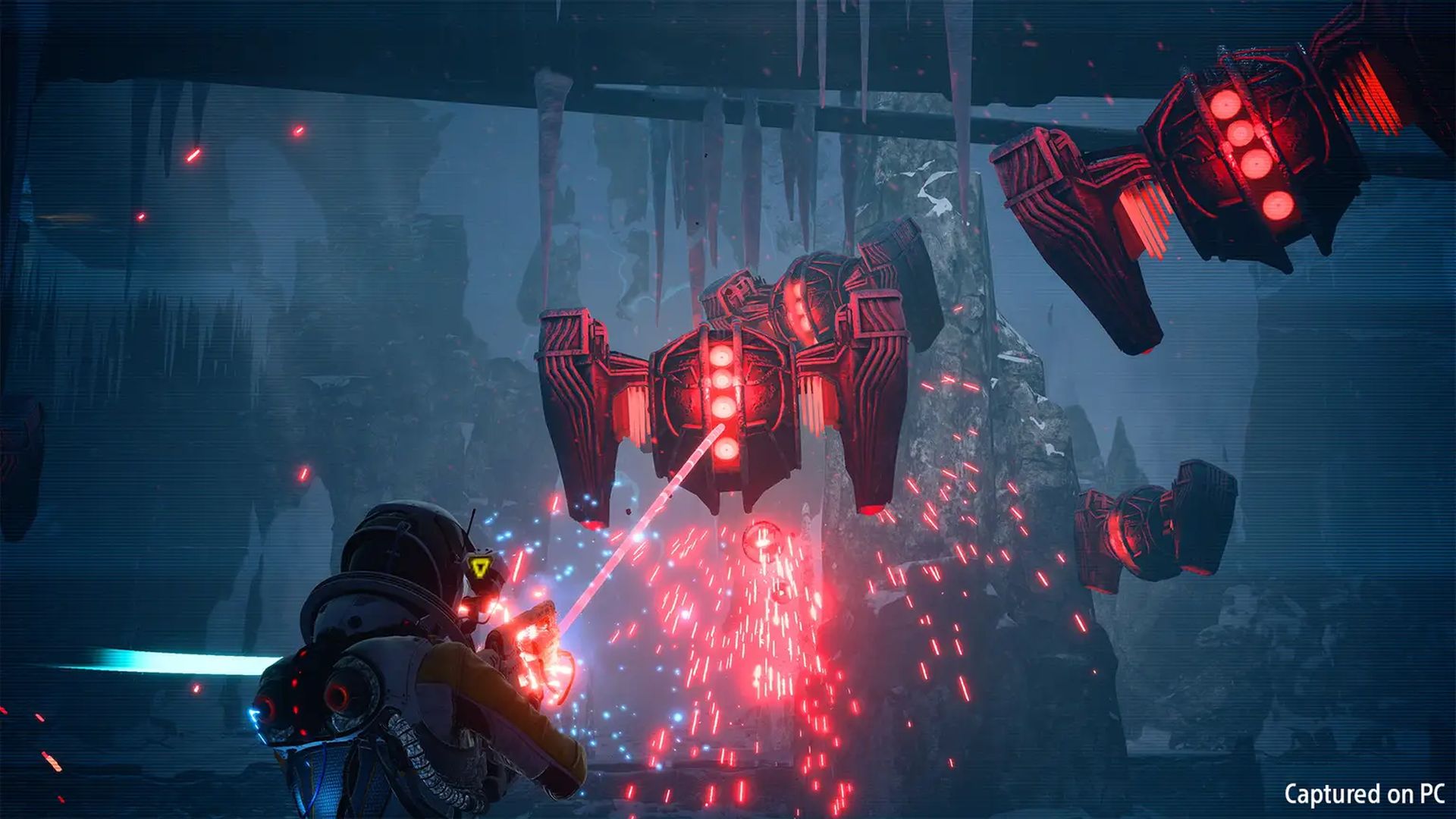While it’s relatively common to see AAA studios taking on new genres that are typically associated with indie releases, the roguelite genre has somehow largely managed to escape this fate. Other than some games getting optional game modes on the side that feature roguelite elements, we haven’t really seen a big studio take a stab at the genre until one of the PS5’s few early exclusives, Returnal. Having spent a couple of years stuck on the console, Returnal is now finally out on PC. But as always, the question is whether the game made the jump between platforms in one piece, and how well it still holds up when it comes to its gameplay and story.
Returnal, for those not in the know, is a roguelite third-person shooter with a strong emphasis on speed, mobility, and bullet hell elements. It puts players in the shoes of Selene, who finds herself crashed on an alien planet under mysterious circumstances. After finding a gun off a corpse that looks exactly like her, Selene decides that the best course of action would be to figure out what exactly is happening on this planet, and to do that, she has her first (vague) mission: locate the source of the mysterious White Shadow broadcast.
The main story of Returnal is one of the most interesting takes on the genre. The closest comparison I can think of is Hades—both games make the fact that their protagonists die constantly in failed runs a major part of their story. However, where Hades has its protagonist, Zagreus, constantly making some sort of progress with the characters around him, Selene, in her isolation, instead makes progress within. Without giving too much away—and there is a lot to accidentally spoil if you’re not being careful—Returnal’s story is more about Selene herself rather than her circumstances or the alien planet.
“Returnal’s story is more about Selene herself rather than her circumstances or the alien planet.”
It is worth noting that Returnal makes heavy use of its weirder aspects as part of its marketing. From the moment you fail your first run, you’ll notice recurring nightmares involving, among other things, a mysterious astronaut, and some strange tentacles. There’s a house as a recurring motif, as well as Selene’s entire ship—Helios. Throw in the fate of a seemingly-long-dead alien race, and a mysterious alien language that can be deciphered over the course of several runs—runs that Selene herself seems to have gone through if the logs you find all over the place are any indication—and it should be obvious that Returnal has a lot to unpack when it comes to its story, themes, characters, and what the game’s trying to say.
Before we get to the core gameplay, let’s talk about the most important aspect of this release—PC performance. Having spent a few hours with Returnal, and testing out gameplay and performance in at least two of the game’s biomes, it’s safe to say that Sony’s spree of having excellent performance in its PC ports is unbroken. Despite the relatively hefty requirements (especially if you’re planning to play with ray tracing), Returnal offers several options for adjustment, leading to the right amount of performance.
I was able to get frame rates of between 60 and 100fps on a PC equipped with a Ryzen 5 3600, an Nvidia GeForce RTX 3060 Ti, and 32GB of RAM, and with the game running at its “High” preset. PC optimisations aren’t just limited to performance on hardware and high frame rates either; one of the smaller, but much appreciated tweaks is that every time you launch Returnal after an update, it will pre-compile its shader caches. This means that there will be less stuttering in the minute-to-minute gameplay, which is great since even a couple of dropped frames could spell doom for an otherwise-promising run.

“Returnal offers several options for adjustment, leading to the right amount of performance”
Sadly, the same couldn’t be said of how Returnal runs on the Steam Deck. After tinkering with it as much as I could, going as far as lowering just about every setting I could get away with lowering, and even trying a few command line launch arguments, I just couldn’t get Returnal to maintain a stable frame rate of even 30fps in the game’s starting zone. This means that, even without any enemies and projectiles around you, Returnal just can’t perform as well as it needs to in order to be an enjoyable experience. As it currently stands, Returnal on the Steam Deck is a bad idea. Future updates may, however, solve some of these issues.
Of course, none of that would really matter much if the gameplay couldn’t keep your attention, and Returnal is certainly no slouch in that department either. Returnal has all the typical aspects of roguelite shooters that you would expect—fancy weaponry that gets upgraded over the course if individual runs, small upgrades throughout a run, a meta progression that revolves around unlocking new weapons and upgrades, and even a Metroid-inspired aspect of meta-progression where you start getting new equipment to help you explore older areas.
There is definitely a constant feeling of progression in some form or another, be it in individual runs as you pick up health and weapon upgrades, or maybe a new parasite that enhances some of your abilities, or on a meta level, with more important unlocks, like the blade, or even the grappling hook.

“There is definitely a constant feeling of progression in some form or another”
The minute-to-minute gameplay of Returnal, however, where things get much more interesting. Speed is one of the most important aspects of the game. You’re expected to constantly be on the move, and while the game has a dedicated button to help you aim with precision, you’re going to get more use out of the hip fire as you try to sprint, dodge, and melee your way through hordes of enemies. This is because just about every enemy uses attack patterns inspired directly by classic shoot ‘em ups and bullet hell games, like Ikaruga.
Enemy attacks are often giant coloured orbs, typically fired in a pattern of some sort. To help you deal with this, Selene is equipped with an incredibly-versatile dodge. Not only is the length of the dodge itself dependent on how long you keep its button pressed, but it’s also an incredibly important part of regular exploration—since you can use it to jump over larger gaps—and combat. Thanks to its short cooldown of around a second, you’re expected to be using the dodge constantly, especially since it lets you pass through enemy bullets and lasers without getting hit.
And not getting hit while dealing with hordes of enemies is where another interesting aspect of Returnal’s gameplay starts to come in. The more kills you can get while avoiding damage, the higher your Adrenaline level gets. Overload is a way to reward good gameplay by offering the player small but meaningful buffs the longer they’re able to play well. The moment they get hit, the Adrenaline counter is reset to 0, and the player has to start getting those buffs all over again. Adrenaline buffs, dubbed Overloads range from simple—like being able to track enemies through walls—to interesting—like a longer window to trigger the active reload—to quite powerful—like an enhanced melee attack or a 50% boost to your weapon proficiency gains.

“Thanks to its short cooldown of around a second, you’re expected to be using the dodge constantly”
One of the earliest roadblocks most players—including yours truly—have always faced with Returnal is the first biome’s boss: the Phrike. And this boss fight is one of the best examples of just what makes Returnal so much fun. Despite having spent several days trying to kill Phrike when I had first started playing Returnal back in 2021, I was only able to beat it after a week. Despite this, however, the Phrike never really felt cheap. It always felt like there was an issue of player skill at play, and there was always a constant drive in me to get better at the game. Having replayed the opening sections on PC, I can safely say that this wasn’t just nostalgia speaking. When it comes to third-person action gameplay, Returnal is right up there with some of the best.
I’ve long maintained that Returnal is, by itself, enough of a reason to justify owning a PS5 ever since I first played it when the console launched. And now that it’s no longer stuck on the console, the reason to buy the console has been significantly diminished—at least for someone like me who doesn’t find Sony’s other first-party output particularly interesting. Returnal is a gorgeous game that sounds excellent, plays incredibly well, and most importantly for the sake of this review, has made the jump from PS5 to PC in a grace that few other titles still seem to be capable of. Despite two years since the initial release of Returnal, our thoughts on the game haven’t really changed. Returnal is still an incredibly fun, gorgeous game that runs great on PCs.
This game was reviewed on the PC.
Returnal PC Review – Helios Abandoned
Source: News Beginning

0 Comments